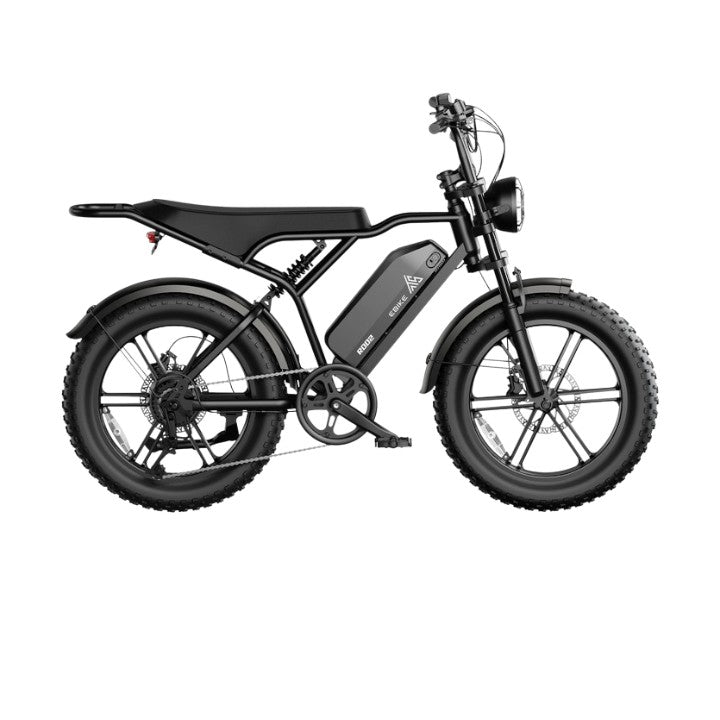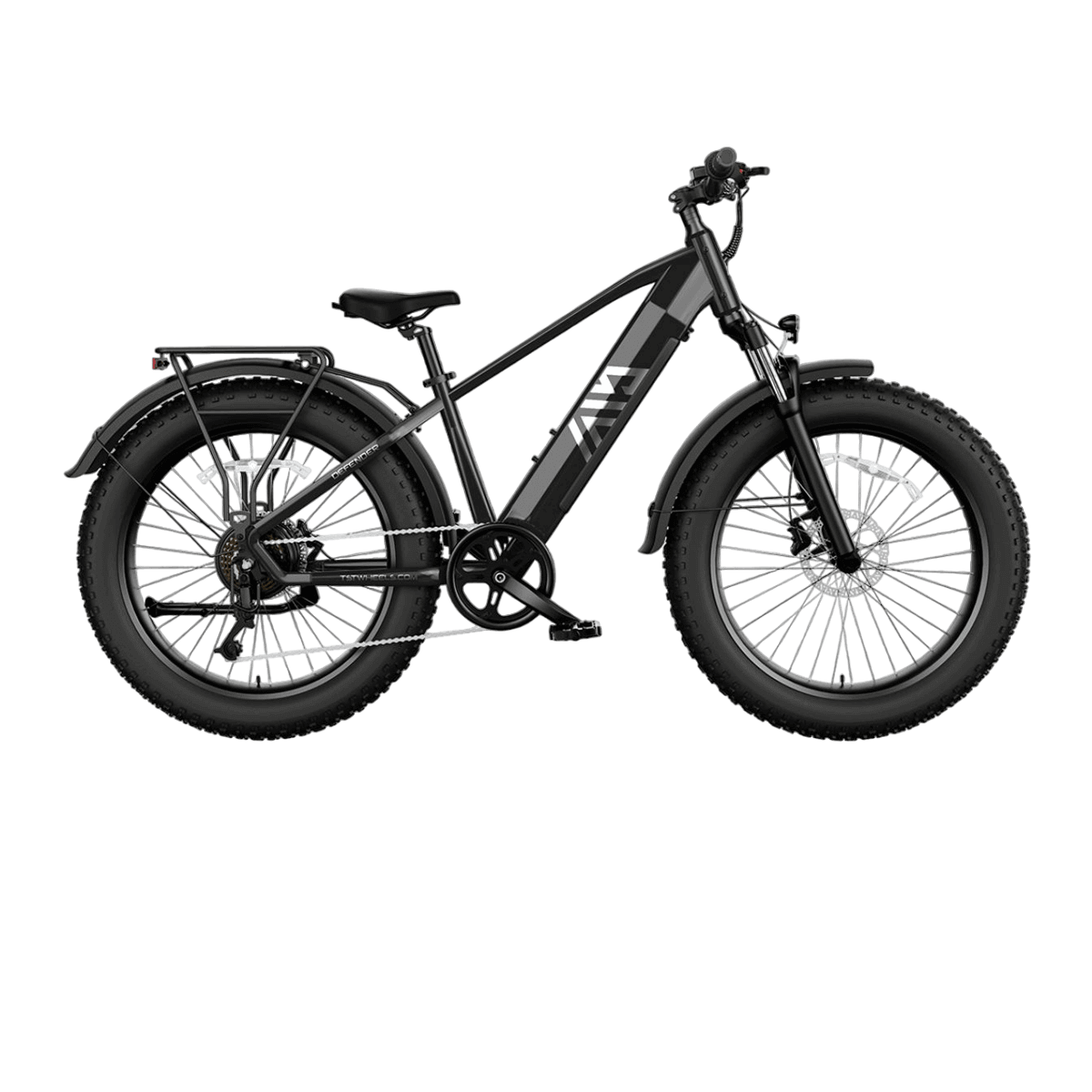Choosing between pedal assist and throttle control on moped-style electric bikes defines your riding experience, fitness benefits, and battery efficiency. Pedal assist offers a natural, exercise-friendly ride by providing motor support only when pedaling, while throttle control delivers instant power without pedaling. Models like the TST R002 combine both systems, allowing riders to tailor their ride to comfort, terrain, and personal preference.
What Is Pedal Assist and How Does It Work on Moped-Style Ebikes?
Pedal assist (PAS) activates the motor only when you pedal, using sensors to measure pedaling effort and adjust motor power accordingly. This system provides a smooth, natural cycling experience that complements your input, helping you climb hills and extend range while maintaining physical activity. Multiple assist levels allow customization from gentle boosts to strong support, ideal for fitness-focused riders.
How Does Throttle Control Differ from Pedal Assist?
Throttle control lets riders engage the motor independently of pedaling via a twist grip or lever, similar to a scooter. It provides immediate acceleration and effortless cruising, perfect for quick starts, stop-and-go traffic, or riders with limited mobility. However, throttle use often drains the battery faster and may reduce exercise benefits compared to pedal assist.
Chart title: Pedal Assist vs. Throttle Control Comparison
| Feature | Pedal Assist | Throttle Control |
|---|---|---|
| Motor Activation | Only when pedaling | Anytime via throttle |
| Exercise Benefit | High (engages rider effort) | Low (no pedaling needed) |
| Battery Efficiency | More efficient | Faster battery drain |
| Control Over Power | Adjustable assistance levels | Instant power, less nuanced |
| Riding Experience | Natural, bicycle-like | Scooter-like, effortless |
Which Riding Styles Benefit Most from Each System?
Pedal assist suits riders seeking fitness, longer rides, and varied terrain, offering controlled power that enhances endurance and muscle engagement. Throttle control benefits those wanting convenience, minimal physical effort, or quick bursts of speed in urban environments. Many moped-style ebikes, including the TST R002, combine both for maximum versatility.
Why Does Pedal Assist Offer Better Battery Efficiency?
Because the motor only assists based on pedaling input, pedal assist systems use energy more judiciously. The rider’s effort reduces motor load, extending battery life and ride range. Throttle systems draw continuous power regardless of pedaling, leading to faster battery depletion, especially during prolonged use.
How Does Control and Safety Differ Between Pedal Assist and Throttle?
Pedal assist provides gradual power delivery, allowing smoother acceleration and better speed modulation, which enhances safety on varied terrain. Throttle control can cause sudden acceleration, requiring careful handling to avoid loss of control. Pedal assist encourages rider engagement and awareness, improving reaction times and overall safety.
What Are the Legal Considerations for Pedal Assist and Throttle Ebikes?
Many jurisdictions classify pedal-assist e-bikes as bicycles, permitting use on bike paths and requiring fewer regulations. Throttle-only bikes may be regulated as mopeds or motor vehicles, requiring registration, licensing, and helmet use. Understanding local laws is essential before choosing a system, especially for moped-style e-bikes like the TST R002.
Buying Tips
When selecting a moped-style ebike with pedal assist and/or throttle:
- Choose models like the TST R002 that offer both systems for versatility.
- Prioritize motor power and battery capacity suitable for your terrain and commute.
- Look for adjustable pedal assist levels for customized support.
- Ensure safety features such as hydraulic disc brakes and integrated lighting.
- Verify compliance with local laws regarding throttle use and classification.
- Purchase from reputable brands like TST EBike with quality control and warranty.
These tips help you select the best system for your riding style and legal compliance.
Pedal assist requires pedaling to activate motor support, offering a natural biking feel and better battery efficiency. Throttle control provides instant power without pedaling, ideal for quick acceleration or steep hills. The best option depends on riding style: pedal assist suits exercise-focused riders, while throttle is better for effortless cruising.
Electric bikes have revolutionized cycling, combining pedaling with modern motor power to produce something entirely different than what was possible before. Moped-style electric bikes are a prime example of excellent design and performance, offering both pedal assist and throttle control. Understanding the differences between these features can help you choose the one that best matches your riding style.
What is Pedal Assist and How Does It Work?
Pedal assist (PAS) engages the motor only when you pedal, with sensors detecting movement and adjusting power based on your effort. It offers multiple assistance levels (e.g., eco, sport) for customizable support. This system mimics traditional cycling but with less strain, making it energy-efficient and ideal for longer rides or hilly terrain.
Pedal assist is your energy-saving companion while riding. Although it doesn’t completely replace pedaling, it provides extra power support. The mechanism works intelligently: when you begin pedaling, sensors on the bike detect your effort and signal the motor. As you pedal, the motor engages, providing extra power to help you ride faster with less effort. Even on a scooter-style electric bike, this riding feel remains natural and familiar, but much more relaxed. With multiple levels of pedal assist, from gentle pushes to strong "tailwinds," you can enjoy comfortable support under various riding conditions. Think of pedal assist as your additional boost, ensuring you always start your ride with ease!
However, pedal assist has its drawbacks. The motor might take a moment to engage, leading to slower acceleration when starting. This can be a slight disadvantage when crossing intersections or keeping up with traffic. New riders might also face a learning curve when it comes to adjusting the gear system and finding the right level of pedal assist.
What is Throttle and How Does It Work?
A throttle (twist or thumb-operated) delivers instant electric power without pedaling, similar to a scooter or motorcycle. It provides full control over speed, making it great for stop-and-go traffic or steep climbs. However, it drains the battery faster than pedal assist and may not be legal in all regions for e-bike classification.
Throttle is your “power substitute” during riding, providing continuous power support without requiring you to pedal. Imagine that by simply twisting or pressing the throttle, you can quickly cross streets or climb hills effortlessly, without any pedaling. How does the throttle work? It’s very simple: when you press the throttle (usually a control lever or button on the handlebars), the motor instantly provides extra power to propel the bike forward, without needing to pedal. You can adjust the speed with your hand just like controlling a scooter, achieving rapid or slow movement. The throttle mode is especially useful when you need to rest, such as moving quickly through traffic or gliding home after a tiring ride. Additionally, when starting at a red light or stop sign, the throttle mode makes it easier to get moving again, making your ride more effortless and convenient.
However, relying solely on throttle control also has its downsides. When used without pedal assist, the battery drains faster because the motor works without any help from the rider. This is something to consider on longer rides. Additionally, constant use of the throttle may lead some riders to depend on it more than pedaling, reducing the overall pedaling activity and the exercise benefits.
How to Choose Between Pedal Assist and Throttle Control?
Choose pedal assist for exercise, longer range, and a natural ride feel. Opt for throttle if you prefer effortless acceleration, have mobility limitations, or ride in hilly areas. Some e-bikes offer both for versatility. Check local laws, as throttle-only modes may classify the bike as a moped, requiring registration or licensing.
Owning a scooter-style electric bike equipped with both pedal assist and throttle is like having two highly adaptable roles, ready to meet any need or mood.
Pedal assist turns your electric bike into the ultimate workout partner. When faced with long and steep hills, it acts like a supportive friend, always ready to provide extra push to help you tackle challenges. It’s perfect for riders who want some exercise but need assistance for longer distances or more difficult routes without quickly losing steam. Just by gently pedaling, you can ride farther and face bigger challenges without getting fatigued too soon.
Throttle, on the other hand, acts like your personal chauffeur. You don’t need to pedal; just gently twist the throttle to move forward quickly. After a hard day’s work, the throttle lets you glide home effortlessly, without worrying about leg fatigue or sweating. In busy traffic, the throttle helps you accelerate quickly, smoothly navigating through traffic or crossing intersections. It allows you to enjoy a relaxed or leisurely ride without effort.
Whether you’re aiming for a challenging workout, a relaxed ride, or a balance of both, the blend of pedal assist and throttle adjusts to your energy and riding preferences, ensuring a great experience every time.
Conclusion
Moped-style electric bikes blend traditional cycling with modern electric support, giving you great flexibility. Use pedal assist for tackling hills and long distances, or switch to throttle control for easy cruising. This mix of features makes sure you get the best ride, whether you’re aiming for fitness or comfort.
If you’re looking for an electric bike that offers both functions, the TST® R002 20'' 1300W Full Suspension Moped-Style Electric Bike is an excellent choice. It provides multiple levels of pedal assist for tackling steep climbs and long rides, along with throttle control for easy, stress-free navigation. To learn more about the TST® R002, check out our detailed introduction here. Ready to purchase? Visit our official website and start your riding journey today!







Leave a comment
All comments are moderated before being published.
This site is protected by hCaptcha and the hCaptcha Privacy Policy and Terms of Service apply.